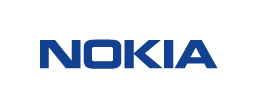Designing Broadband Equipment for Maximum Eco-Sustainability
Nokia is committed to making broadband more sustainable. Our approach covers reducing the power consumption of broadband, thus reducing greenhouse gas (GHG) emissions, which is a topic I explored in this blog; and minimizing the environmental impact of our broadband products and their packaging, which is my focus in this article.
Unlike some manufacturers’ “design to cost” mantra, Nokia has a Design for Environment principle that considers all aspects of sustainability. Lifecycle thinking is a key component: through it, we reduce our environmental impact across production, operations, product use, takeback and end of life. This approach covers innovations in three main areas:
- Product design to optimize the use of raw materials, maximize product recyclability potential, and minimize power consumption.
- Packaging design to reduce the environmental impact of the packaging itself and transport, installation and field operations.
- Takeback, repair, refurbish and recycle services to maximize the lifetime value of equipment.
Product design
First, we design products with high modularity in mind. From the Wi-Fi beacons in people’s homes to the shelves supporting multiple PON generations, all our products can be easily disassembled, repaired, or repurposed, giving some of them a lifespan as long as 20 years.
We pay particular attention to recyclability. Where possible, products can be readily separated into their component parts, which can be easily sorted for recycling. In fact, 80 percent of our new generation fixed networks products can easily be recycled. Other advantages of modularity are easier repairs, on-site configuration changes, remote software downloads, and extending the capacity of existing product features.
We’ve also improved the use of recycled materials in our products. For example, the aluminum we use in our cabinets, chassis, and heat sinks, uses recycled content from manufacturing waste. This creates some challenges related to material purity, so we work diligently with our suppliers to get the balance right and maximize the percentage of recycled material.
Packaging design
We maximize the use of 100 percent recyclable packaging materials fit for the circular economy, replacing foam, rubber and plastic wrappings, with organic materials like corrugated cardboard. But we’ve gone much further than just using recycled and recyclable materials. Our packaging designs protect the integrity of Nokia solutions at each stage and make on-site handling easier and safer, as you can see in this video.
Our clever designs minimize waste and make recycling easier. Space-saving packaging also increases our transport efficiency through pallet or container load optimization, reducing CO2 emissions from transportation. In 2022, we have received the prestigious Red Dot Design Award: Best of the Best for our groundbreaking design in sustainable packaging solutions: innovation and design clearly go hand in hand.
End-of life practices
We have several best practices in place for dealing with end-of-life products. We offer takeback, refurbishment, and recycle services. Refurbishment is an interesting one as it creates a win-win-win. It reduces overproduction by Nokia; it makes for easier procurement for operators; and it’s better for the planet. It’s also a fast-growing opportunity. We’ve seen 40 percent year-on-year growth in North America for refurbished Nokia ONTs since 2018, and no wonder: refurbishing meets all the usual reliability criteria while avoiding CO2 emissions by up to 80 percent compared to building from new materials. These are the kind of savings network operator Orange hopes to achieve in a joint commitment with Nokia, which includes the use of refurbished Nokia FX access equipment.
Total commitment
Through our Design for Environment principles and our commitment to bridging the digital divide, Nokia is pursuing Broadband Zero where we use our innovation power to ensure zero communities are excluded from broadband, zero people are left behind, all while aiming for zero waste. Come and talk to us at the FTTH Conference 2022 about how we can work together and take concrete steps to reduce the carbon footprint of your networks.

